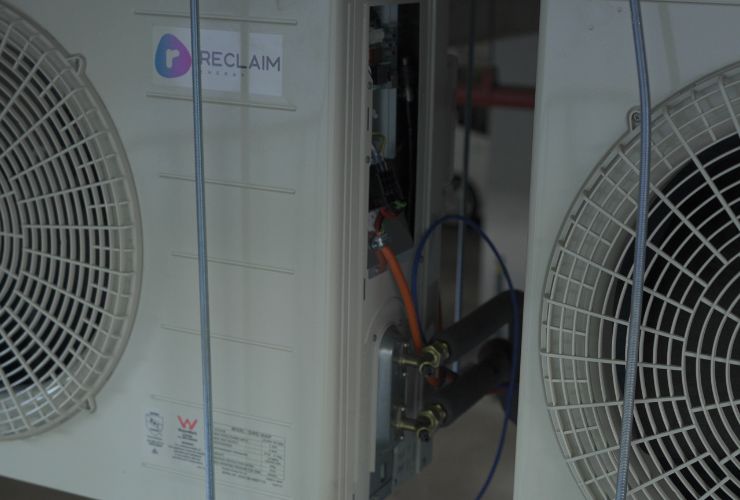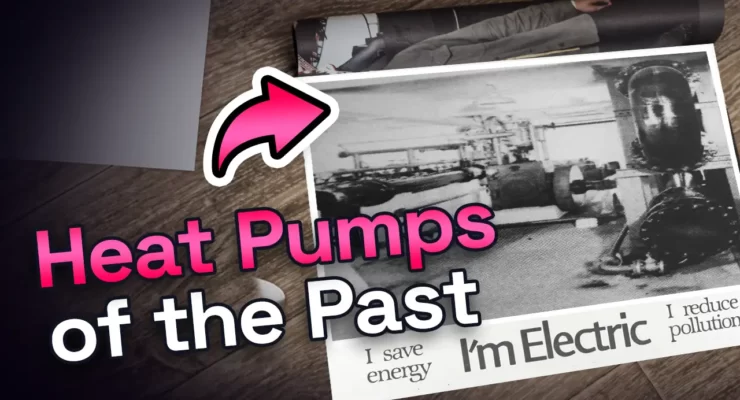Fast read
Heat pump technology, contrary to popular belief, has been around for over 150 years. The principle of the heat pump was realised in 1856 by Austrian Peter von Rittinger while experimenting with salt brine evaporation.
The first large-scale heat pump emerged in 1945, designed by John Sumner in Norwich. However, widespread adoption was slow because of the low cost of fossil fuels. The momentum shifted in the 1970s, spurred by the OPEC oil crisis and a search for highly efficient heating alternatives in Sweden.
As a result, closed-loop systems were developed in various European countries. By 2008, the US market had installed around 750,000 units. Today, with advanced technology and growing awareness, the International Energy Agency reported 180 million units in 2020, projecting 600 million by 2030.
What is the history of heat pumps?
Many customers, as well as those keenly interested in heat pumps, feel as though heat pump technology is a recent breakthrough. As a result, they are concerned that the systems are untested and/or at an early stage of development. However, the truth is that heat pump technology, in some form or another, has a long history, being around for over 150 years. The first ground-source heat pump was installed more than 70 years ago.
Heat pumps have increased in popularity rapidly in recent years, but the heat pump history dates back much longer. Many people think heat pumps are a more recent invention, but after reading this article, you will realise this is untrue.
The important milestones in the history of heat pumps
Some important milestones of the heat pump are the following:
1855-1857: Lord Kelvin synthesises the critical theory underlying heat pumps
1855 – 1857: The first heat pump is developed and built by Peter Von Rittinger
1945: The first large-scale water source heat pump was built in Norwich
1983: Lämpöässä within Lapua, Finland, build their first heat pump
Where it began
In 1856, Austrian innovator Peter von Rittinger pioneered the concept of the modern-day heat pump with his groundbreaking invention. His inventive mind stumbled upon the idea while conducting experiments on the heat properties of water vapour for the evaporation of salt brine. This eureka moment not only revolutionised his experiments but also paved the way for a game-changing technology that would have far-reaching implications.
Rittinger’s ingenious invention proved to be highly effective, prompting Austria to adopt heat pumps for a practical and essential purpose: drying salt in salt marshes. This application showcased the versatility and efficiency of the heat pump, turning it into a crucial tool in industrial processes.
Today, heat pumps are advanced systems that are essential for heating and cooling buildings. Geothermal heat pumps use renewable energy sources such as air, ground, or water. They provide a more eco-friendly option for heating and cooling compared to traditional methods.
John Sumner
The next major step in the history of heat pumps came many years later. In 1945, John Sumner produced the first large-scale heat pump. Sumner did this at Finn Geotherm in Norwich.
The Norwich City Council Electrical Department has recently built a new office where they intended to use a heat pump to heat the building. However, wartime austerity meant otherwise, as the limited resources prevented the department from working on such a project.
After the war, Sumner gathered resources based on an SO2 refrigerant. This heat pump had a seasonal efficiency ratio of 3.42.
A peak output of 234kW and an average thermal delivery of 147kW. This was designed to circulate air at 50-55 degrees Celsius. While Sumner did the job, the design was not copied throughout the rest of the UK because of the low cost of fossil fuels at the time, but he did not stop there.
John Sumner continued his mission by installing a closed-loop ground source heat pump in the early 1950s. This design was originally constructed using copper pipe buried 1m deep, filled with circulating antifreeze. This design was not copied across the UK, as fossil-fueled systems were still preferred while costs were low.

Oil crisis
The momentum behind the popularity of this technology began to increase in the 1970s. The reason behind this was the OPEC oil crisis. Furthermore, Sweden undertook developmental processes with new atomic reactors during this time. As a part of this process, the Swedes were looking for more efficient ways to heat homes with electricity instead of paraffin.
During this time, closed-loop polythene systems were standard, with vertically closed-loop systems developed in Germany, Switzerland, and Finland by businesses like Lämpöässä. Switzerland alone was estimated to have between 30,000 and 44,000 GSHP units by 2008. Widespread acceptance had accelerated much quicker in the United States. By 2008, the US market had installed between 50,000 and 60,000 units per year, with around 750,000 units in service.
Where are we now
Since Peter von Rittinger’s groundbreaking invention in 1856, the history of heat pump technology has seen remarkable advancements and developments. Today, these innovative systems have become an increasingly popular choice for homeowners, businesses, and industries alike. Their efficiency and sustainability make them not only an environmentally friendly option but also a wise financial investment.
The evolution of heat pumps has led to systems that are more efficient, reliable, and versatile than ever before. Modern heat pumps can provide both heating and cooling solutions, adapting to various climates and settings with ease.
Geothermal systems can use air, ground, or water to create energy. This makes them a more environmentally friendly option. They are compared to traditional heating and cooling methods.
The financial benefits of investing in a heat pump are also significant. A heat pump can save energy and lower utility bills for homeowners and businesses. This helps them recover the initial cost over time. In fact, many users find that the energy savings and efficiency gains allow their heat pump systems to pay for themselves in the long run.
According to the International Energy Agency (IEA), the adoption of heat pump technology has been on a steady rise. In 2020 alone, there were approximately 180 million heat pump units installed worldwide. The IEA further projects substantial growth, estimating that the number of installed heat pump units will reach a staggering 600 million by 2030.



